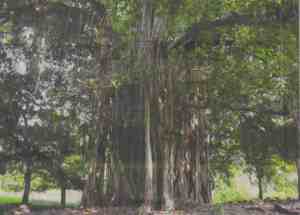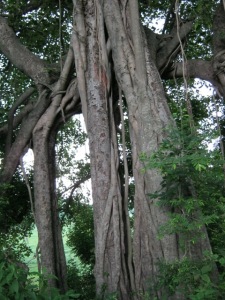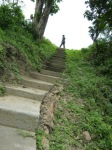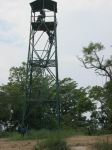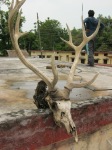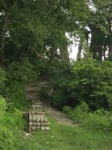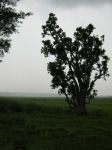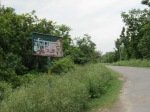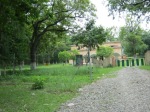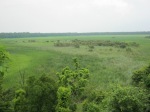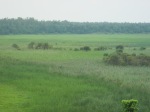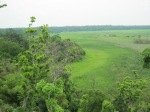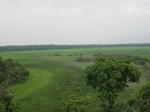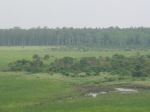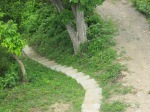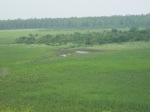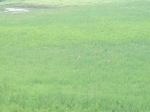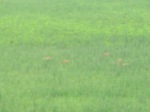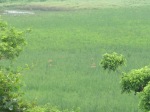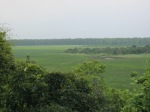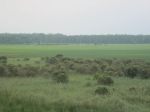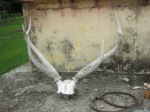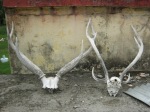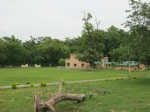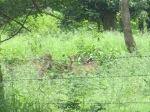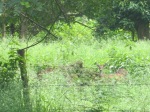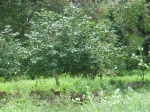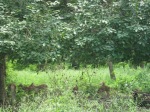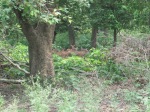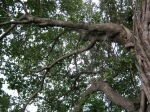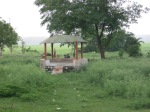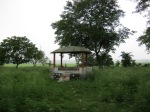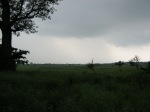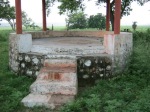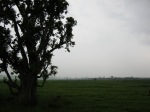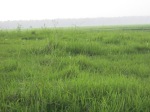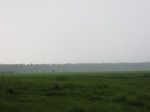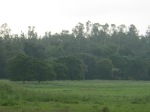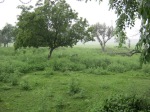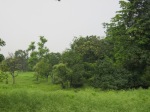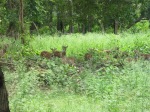BESIDES TOURISTS THAT FLOCK THE HOLY CITY TO SEEK SALVATION, HARIDWAR IS ALSO A HAVEN FOR THEIR WINTERING
Every year, Haridwar plays host not only to lakhs of pilgrims and tourists, from across the country and a abroad, who come here on their religious sojourn, but also to a large number of the winged guests, from the high altitudes in the Himalayas and also from across the Himalays, which descend on the wetlands of the region during winter.  Just as the benevolent nature has endowed Uttarakhand with a rich wealth of luxuriant forests, magnificent mountains and gurgling rivers, she has also blessed it with a number of excellent wetlands, including #AsanBarrage gar in Dehradun district, #PashulokBarrage near Rishikesh and Bheemer reservoir and the #Missarpur Ghat in Haridwar district, which are a haven for migratory fowls for their wintering.
Just as the benevolent nature has endowed Uttarakhand with a rich wealth of luxuriant forests, magnificent mountains and gurgling rivers, she has also blessed it with a number of excellent wetlands, including #AsanBarrage gar in Dehradun district, #PashulokBarrage near Rishikesh and Bheemer reservoir and the #Missarpur Ghat in Haridwar district, which are a haven for migratory fowls for their wintering.
The aquatic birds have already started arriving in the wetlands of the district for their seasonal itinerary. Dinesh Bhatt, professor in biological sciences, department in the Gurukul Kangari University, Haridwar, and an internationelly acclaimed or nithologist, who has conducted extensive research work on the pattern of behaviour of the migratory avifauna, says, that with the onset of winter, when it is too cold in north Europe and Asia and with no germination in from their native, these aquatic fowls migrate from their native habitats, including Palaearctic region in Europe and Asia and descend on the wetlands of the warm regions on the wetiands of the warm regions for shelter and nutrition. ”Their in-built biological clock, making field, help these migratory birds in their smooth journey, along  the specific flyways, to descend on the wetlands in the Indian sub-continent and other warmer places. They stay here till March and as the warmer days arrive, they bid adieu to their wintery abodes and, with their sure sense of direction, return to there native habitats far off for breeding,” says the noted avian biologist.
the specific flyways, to descend on the wetlands in the Indian sub-continent and other warmer places. They stay here till March and as the warmer days arrive, they bid adieu to their wintery abodes and, with their sure sense of direction, return to there native habitats far off for breeding,” says the noted avian biologist.
The wetlands in Haridwar region, such as Pashulok Barrage near Rishikesh, solani River Ghat near Roorkee, Jhilmil Jheel near Laksar, Bheemgora Barrage and the Missarpur Ghat near Haridwar city, which are abuzz with the chirping and frisking of the multi hued aquatic fowis these days, presents a splendid spectacle and a rich feast to the eyes and the ears. Vinay Sethi, a bird scientist, has identified about 34 species of the trans Himalyan birds, Including ruddy shelduck, northern pintall, mallard, gadwall, red crested pochard, black headed gull and Eurasean curlew, which arrive in the wetiands here from cold coutries such as Poland, Uzbekistan and Siberia,
During recent years, these trans Himalayan migratory birds, which used to congregate in the wetlands here in October and November, have started coming late, that is, in November and December and their number is also dwindling. The ornithologists attribute the change in their pattern of migration mainly to global climatic fluctuations. Besides the migratory birds from the Palaeartic region, some species of birds, such as herons wkagtails, egrets, cormorants, black necked redstart, white throated kingfisher and black winged stilt, come down malayas to the lower altitudes for wintering. “Besides the wetlands in the region, the river banks in the melodious notes of the multi coloured migratory birds these days,” says Rajeev Mehta, warden of the Rajaji National Park.
Till a few years ago, the Bheemgora Barrage, situated between Neeldhara and other tributaries of the Ganga at the foothills of the Himalayas, used to be an ideal birding destination for migratory birds during winter, However, during the massive floods of 2010, there was erosion of large parts of the Island here which was used for roosting by the migratory birds, The bird lovers are demanding recreation of the Island at Bheemgora Barrage, with plenty of vegetation on it. Heavy traffic on the Dehradun-Haridwar National Highway and human intervention are other sources of nuisance for the migratory birds here. Now these migratory fowls have found a new destination at Missarpur Ghat, 8 km from Haridwar, for their foraging. The shallow water, the pleasant amblience, the intermixing of the treated sewage water with that of the Ganga, make this ghat a virtual paradise for the migratory birds.
The birds lovers say that thought the state, sufficient efforts are not being made for the conservation of the avifauna, both native and migratory. Since some of the globally threatened bird species, like painted stork, osprey, pallas’s fishing eagle and oriental darter, come to these wetlands, it is all, the more necessary to initiate measures for the conservation of these wetlands for the safe and regular arrival of these rare species of birds. “The conservation of these wetlands will also enhance the aesthetic beauty of these sports and also give a boost to eco tourism,” says a local bird activist.



